
In the annals of history, the Roman Empire stands as a testament to grandeur and sophistication. From towering architectural marvels to exquisite works of art, the Romans left an indelible mark on the world. One aspect of their culture that continues to captivate enthusiasts and historians alike is Roman jewelry. Radiating opulence and timeless elegance, these artifacts provide a glimpse into the rich tapestry of Roman life, where adornment was not merely an accessory but a symbol of status, wealth, and cultural identity.
Materials and Techniques:
In the wake of the annexation of the Greek world, Roman society witnessed a transformative surge in the popularity of jewelry. Quickly adopting the Hellenistic style, Roman jewelry evolved into a distinctive genre during the Imperial Era. Influenced by Western Asian, Egyptian, and various other cultures, this evolution was marked by a profound shift in design elements and materials.
Initially resembling Hellenistic styles, Roman jewelry gradually developed its unique identity, embracing influences from Etruscan practices. Notably, the extensive use of hard gemstones, a practice adopted from the Etruscans, became prevalent. Sri Lankan sapphires, sporadically used by the Etruscans, became a common feature in Roman pieces. Garnets and newly discovered Egyptian emeralds also found favor, often showcased in their natural hexagonal forms with strategically drilled holes for stringing. Diamonds made their debut, while the emphasis on goldwork slowly gave way to a heightened focus on the beauty of the stones.
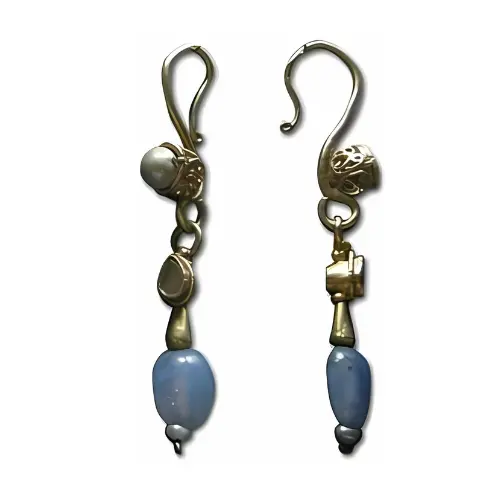
Discoveries from Pompeii and Herculaneum vividly depict the fashion trends of the first century, featuring distinctive bracelets with paired gold spheres forming double domes and matching earrings. Dangling earrings with gemstones suspended from gold wires were equally popular. Rings, ranging from simple bands with engraved seals to ornate gemstone-studded designs, proliferated, despite Pliny's disdain. Intriguingly, some rings served dual purposes, doubling as keys or spanning multiple fingers.
Roman lapidaries excelled in crafting finely engraved stones, producing exquisite cameos that have endured through time. Materials like amber and jet, imported from conquered territories, further enriched the diversity of Roman jewelry. This rich tradition of craftsmanship dispersed across the Roman world, influencing cultures far and wide. The Celts, inspired by Roman elegance, embraced the jewelry-making techniques, initiating a cross-cultural exchange that saw the Romans incorporating typically Celtic materials like jet.
In this symphony of gemstones and gold, Roman jewelry emerged as a testament to the empire's cultural fusion, leaving an indelible legacy that continues to captivate admirers worldwide.
Types of Roman Jewelry:
1. Rings:
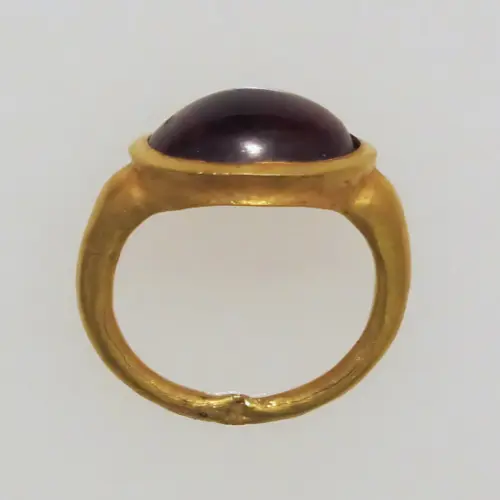
Rings held a prominent place in Roman jewelry, donned by individuals across gender and age. Signet rings, embellished with custom engravings, functioned as seals for significant documents, adding a personal touch to official matters. The Romans displayed a keen admiration for craftsmanship and opulence through intricately designed gemstone rings. Numerous variations in design and types of rings have been unearthed at Roman archaeological sites, reflecting the diversity of this accessory. Men, women, and even children adorned rings crafted from a range of materials such as silver, gold, bronze, iron, and jet. Some rings featured precious stones and intaglios, contributing to their ornate appeal. While some were modest plain bands, others boasted elaborate and intricate designs, showcasing the Romans' penchant for artistic expression in their jewelry.
2. Necklaces:
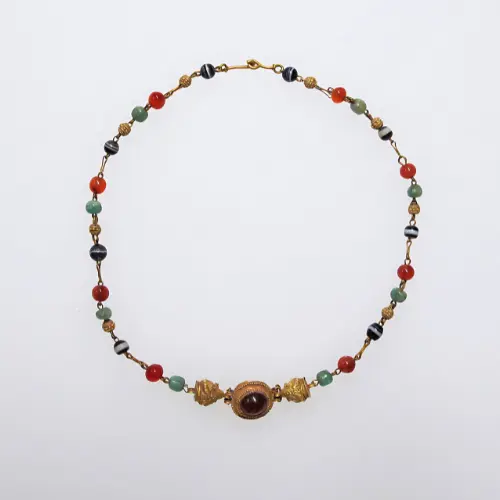
Roman necklaces exhibited a diverse range, spanning from modest chains to elaborate multi-strand creations enhanced with pendants. The incorporation of vibrant gemstones and intricate metalwork elevated these necklaces to the status of genuine artistic masterpieces, often serving as symbols of wealth and prestige. In Britain, torques were prevalent even before the Roman conquest, and historical inscriptions indicate their continued popularity among noteworthy Romans. Chain and bead necklaces emerged as common adornments, with bead necklaces, in particular, enjoying widespread popularity. Occasionally, these bead strands featured small charms or amulets, believed to provide protective properties against malevolent forces. Heads made from various materials such as glass, coral, shell, jet, ivory, and amber, manifested in diverse shapes and sizes, contributing to the ornate diversity of Roman necklaces. Among the distinctive Roman beads, the melon bead stood out, crafted from glass and adorned with a turquoise glaze, featuring distinctive ridges in its design.
3. Bracelets:
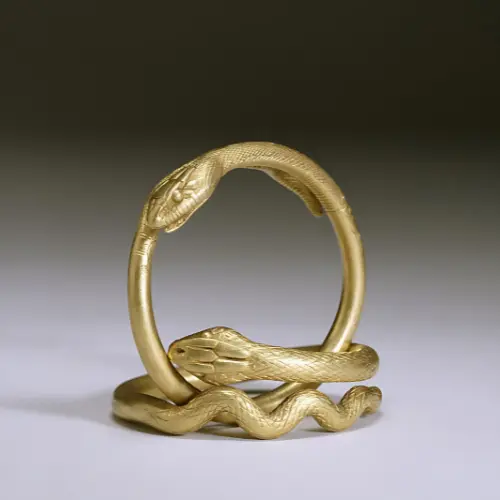
Bracelets, a favored accessory in Roman fashion, were commonly worn in pairs or sets, showcasing intricate detailing and occasional embellishments like engraved charms or miniature sculptures. Crafted from materials such as bronze, bone, and jet, these bracelets varied in size and design – ranging from plain to decorated and twisted metal varieties. The clasps exhibited diversity, featuring bent edges, rivets, hooks and loops, or even sophisticated hinges. Shale, a soft material quarried since the Iron Age, continued to be employed by the Romans for crafting bracelets, while bangles adorned both children and babies. Often buried as grave goods, these bracelets reflect the enduring elegance of Roman jewelry.
4. Earrings:
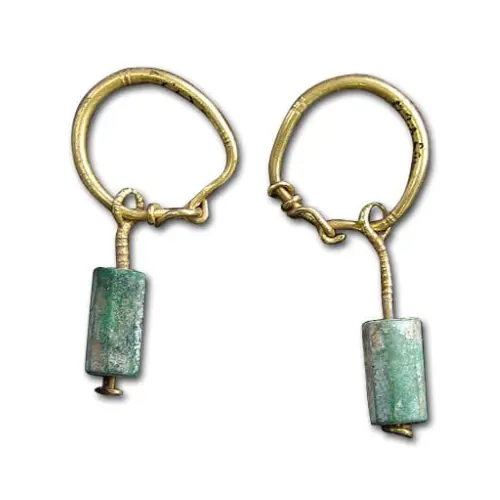
Roman earrings came in various styles, including hoops, studs, and drop earrings. Gemstones and pearls dangled from delicate chains, adding movement and elegance to the wearer's appearance.
Symbolism and Cultural Significance:
Roman jewelry wasn't just about aesthetics; it carried deep cultural significance. Pieces often featured symbols associated with Roman mythology, gods, and goddesses. Additionally, jewelry served as a marker of social status and was sometimes used as political propaganda, showcasing loyalty to a particular ruler or dynasty.
Legacy and Influence:
The legacy of Roman jewelry extends beyond the boundaries of the empire. Even today, we see echoes of Roman design in contemporary jewelry, with modern artisans drawing inspiration from the intricate details, use of gemstones, and the timeless elegance of Roman craftsmanship.
Roman jewelry stands as a testament to the opulence and cultural sophistication of one of history's greatest civilizations. Through meticulous craftsmanship and the use of precious materials, the Romans transformed everyday accessories into works of art that transcend time. As we admire these artifacts today, we continue to be captivated by the allure of Roman jewelry, each piece whispering tales of a bygone era and the everlasting appeal of timeless elegance.
You May Also Like:
EXPLORING THE RICH SYMBOLISM OF THE RUSSIAN ORTHODOX CROSS
REGENCY ERA: GRACEFUL GLAMOUR THROUGH TIME'S JEWELED EMBRACE
EXPLORING THE TIMELESS BEAUTY OF RENAISSANCE JEWELRY







